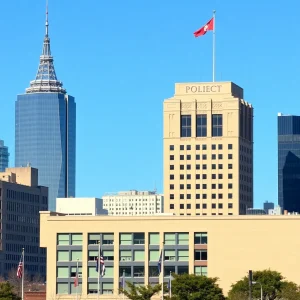Duke Selects Route Through Spartanburg for Power Line as Locals Stand Firm
The residents of the farmstead community of Green Pond in Spartanburg are ready to fight back as Duke Energy gears up to carve through their ancestral land for their Big Ferguson Transmission Line project. Duke’s decision on the line route in early July set the stage for a forthcoming conflict. In making its decision, the energy company took into account multiple factors including property use, natural and cultural resources, and homeowners’ inputs.
The Project and its Impact
To build the power line, Duke plans to install towers across a 68-foot-wide track that stretches miles across rural farmland. The property acquisition phase, expected to stretch into 2025, requires Duke to survey the affected land and negotiate easements with homeowners. The 7.5-mile line runs predominantly across the peripheries of people’s properties, affecting 26 owners. Over 3 miles of this line will follow an existing deactivated power line, while the remaining 4.4 miles will cut through private property, bearing decades of family heritage.
According to Rhonda Drummond Cox, a local landowner in the line’s path, “They’re invading our property, our history, and changing it forever”. The residents believe Duke chose their community for the project because it’s more affordable compared to commercial places.
A Legacy Under Threat
Generations of families like the Drummonds have been agricultural practitioners in this region for centuries. Melissa Drummond and Rhonda Drummond Cox, sisters who grew up in Green Pond, still reminisce about the wide fields of their father’s corn during their childhood. They fear their childhood place, now overgrown with grass, shrubs, and surrounded by different kinds of trees, will be forever scarred by the high-strung wires.
Oil Clash with Corporate Interests
Unknown to the Green Pond residents, Duke Energy had been preparing for the line in secrecy. The company acquired land for a new substation in June 2022 while staying mum about the acquisition. Only after securing the land did Duke reveal the substation project, which was speculated to keep property acquisition cost low. However, the crux of the conflict lies in the fact that Duke’s line falls below the 125-kilovolt threshold. As such, it did not need state permission to proceed with the plans.
Stirrings of Resistance
Once the plans were revealed, the local residents quickly grouped against Duke, forming the Green Pond Rural Alliance. Despite resistance and protests, Duke’s plans remain unaffected, but the residents are ready for a court battle. Rodney Neal, GPRA President, asserts they are still opposing Duke through the public service commission. They believe that Duke shouldn’t be allowed to construct the line without the inclusion of the company’s state-required integrated resource plan.
“Despite stacked odds, we’re going to fight it to the fullest extent of the law,” asserts Drummond Cox, reflecting the sentiment of the Spartanburg community.







